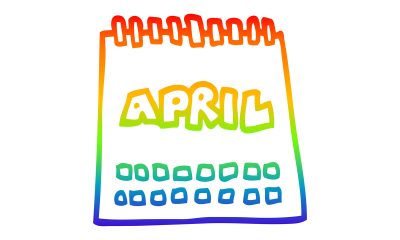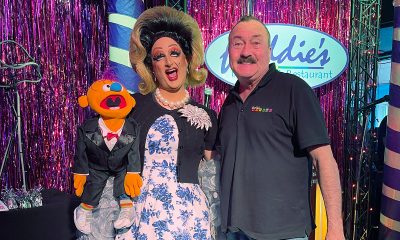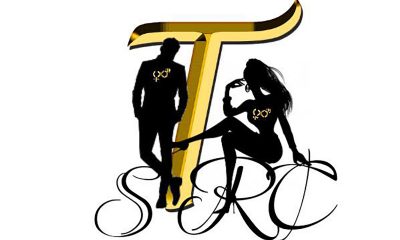a&e features
‘Queer Eye’s’ Bobby Berk offers dishy, celeb-heavy Q&A
Design guru in region this weekend for Belfort Furniture appearance
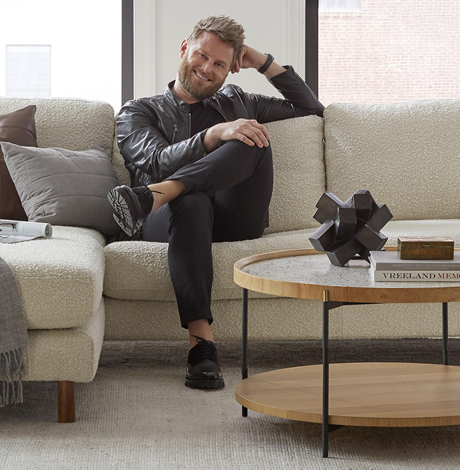
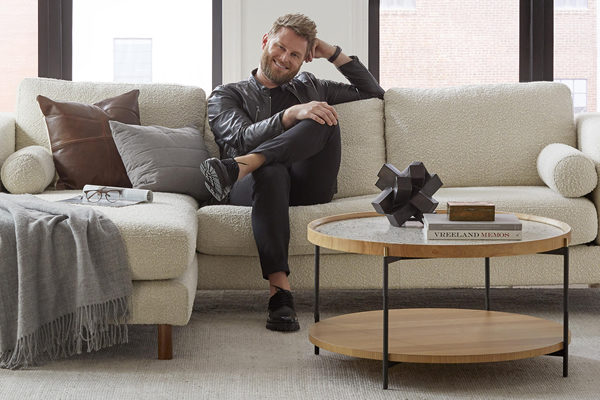
Bobby Berk
‘Conversation on Design’
Sunday, March 1
2 p.m.
Free
Building 3
22250 Shaw Road
Dulles, VARSVP to [email protected]
Bobby Berk, one of the “Queer Eye” Fab Five, will give the regional unveiling of his new furniture collection Bobby Berk for ART Furniture this weekend at Belfort Furniture in Dulles, Va. He spoke to the Blade Tuesday afternoon by phone from his home in Los Angeles about his designs, his costars, his gal pal Taylor Swift, his Hollywood adventures and a whole lot more.
WASHINGTON BLADE: How’s 2020 been for you so far?
BOBBY BERK: 2020’s been great, very busy. Just wrapped up shooting a podcast a few minutes ago, I’ve got your interview, then I’m running to do a live interview with Channel 9 in Sydney Australia. Been filming some additional shows, been doing a lot of stuff with “Queer Eye,” a lot of great things with my furniture lines, so 2020 already feels like it’s been a full year.
BLADE: Tell us what you’ll be showing at Belfort Furniture this weekend.
BERK: So my new furniture line with ART, it’s great because you know people ask me, fans from the show all the time, you know, “I wish you could decorate my house, I with you could pick out furniture for me,” and obviously I can’t with everyone so I wanted to create a line that was accessible to almost anyone. I think it would have been kind of a dick move of me to talk on “Queer Eye” about how changing your home and help change your life and then go out and make a super expensive furniture line that nobody could afford. So I wanted to make sure I partner with a company like ART who is really good at finding that perfect happy medium on price points to where you’re getting good quality furniture but you’re also getting it at a price point that most people can afford.
BLADE: What was the production timeframe roughly?
BERK: I believe we started the process when I was filming season three and four so that would have been late 2018, I think. … We launched it by spring of 2019 … (which) that was for stores to be able to come look at it like Belfort. Then by the time fall hit, it was in a lot of stores. And now this spring … additional stores are getting it that we weren’t able to fulfill in the very beginning first order. We’re dong 10 in about two months, then we’re going to be launching the second collection as well.
BLADE: How has the reaction been so far?
BERK: It’s been a very great reaction. We have had to stage out when retailers like Belfort start to carry it simply because there was such a great response to it, that we couldn’t open up all the stores that were wanting it. When we launched online, back in the fall, a lot of items instantly went out of stock, so it’s been a really great response. You know, it was a line that inspired by things that I would want in my own home so nice, cool, clean aesthetic that can really go with anyone’s decor. When I design, I always try to make sure I think about the ways a piece can not just look good in a home where people like modern, but also a traditional home. My sofas, for example, can bridge the gap between traditional, transitional and modern.
BLADE: To what degree do you curtail or adjust your creative impulses into something you think will sell? Is there conflict in your own head between art and commerce?
BERK: Uh, yeah, ‘cause for me personally, I would go very minimalist and modern, that’s more of my personal aesthetic, so I would always have to kind of find the happy medium between too modern and cold and still keeping it warm where more people will love it.
BLADE: Are you doing other markets?
BERK: I’ve already done a few in other markets, so Belfort will be my first one in the D.C. area, the only one. We’re very specific about only allowing certain retailers to carry it so we’re not competing against each other. I have another presentation in Orange County next week as well, then an event in Austin, Texas as well. I think it’s next week.
BLADE: How do you have time to keep all this stuff going with the TV show as well?
BERK: I don’t know (chuckles). I’m never home. I’m sadly gone probably 90 percent of the year the last few years so yeah, I’m just constantly on the road.
BLADE: Is this pace sustainable? What if “Queer Eye” goes another 10 years? Will you rip your hair out?
BERK: Uh, probably (laughs). No, this pace absolutely is not sustainable, I think all five of us feel that way but we also know that you know there’s not always a chance that things will be going this well, so we all need to, not take advantage of it, but utilize the recognition we’ve gotten from “Queer Eye” to do other things. Because of course “Queer Eye” could go on for 10 more years or it may go on for one more year. We never know, so we all want to make sure we’ve found those certain things in our wheelhouse that we’re able to continue to focus on. Before “Queer Eye,” I had a design firm and retail stores so, “Queer Eye” has just opened up more doors for me to be able to do more things with that like my collection at ART. So yeah, is this sustainable how much we travel and work? No, it’s not. But all five of us know that we’re not always going to have the amount of opportunities we have right now, so we need to take advantage of all the opportunities that present themselves and then, you know, in five years — I have a four-five year plan of moving to Santa Barbara and having kids and not working as much.
BLADE: On “Queer Eye,” the other guys spend a lot more face time with the heroes because you’re so busy remodeling. Do you ever feel left out?
BERK: Yeah, yeah, you know. With the other boys, they’re part of the show, they’re literally physically with the hero. You know, Jonathan is cutting their hair, Karamo is having a great conversation and helping them with self help, Antoni is teaching them to cook, Tan is helping them with their clothes — they have to physically be there with them whereas what I’m doing the hero can’t actually see, it’s actually against the rules for them to see it, so I’m often kept away from them simply because they’re not able to see what I’m dong and we want to see a surprise. So we have, I’m sure you’ve noticed in newer seasons, I am with the heroes more, but season one and two, I was barely with them at all. When I would be asked by producers if I wanted to go on a shopping trip wth Tan and help with clothes, I’d be like, “No I’m busy, working, that makes no sense,” but then the show came out and it was like, “Oh, I’m so busy working I’m not on the show.” So, newer seasons, I have a bit more interaction with the heroes than in the past.
BLADE: How did you like Japan and what was challenging about taping there?
BERK: I loved Japan, I’ve spent a lot of time in Japan before, it’s one of my favorite places, especially Tokyo. I love it there just because it’s so organized and clean and it’s such a respectable society. Some of the challenges filming there was space. People would sometimes think it’s easier to design a small space than a large space but it’s actually harder, especially in Japan where in rental spaces, you’re not allowed to hang anything on the walls, you’re not allowed to paint, you’re not allowed to do anything to the floors, so we had to get really creative on building functional loft furniture that we were able to make the space look super different than before without even painting or hanging a piece of art on the walls.
BLADE: There’s obvious camaraderie between you and your co-stars. Were you concerned at first whether your personalities would jell? To what do you attribute that camaraderie?
BERK: You know, the five of us from the start in casting, in final casting, there probably was between 40-50 guys around the various different design, fashion, food — what have you, and at first Karamo, Tan and I we just kind of gravitated to each other and were always hanging out. Then Antoni and Jonathan kind of came into the fold and none of us really thought, “Oh this is the Fab Five,” we just kind of naturally liked each other and I think the casting directors and executives from Netflix and Scout and ITV kind of saw that we had a natural chemistry, that we really naturally enjoyed each other and instead of it kind of being a competition, we were always in there telling each other what was going on and helping each other. So I think our camaraderie definitely helps. It’s not always a natural thing, you put five perfect strangers together who are with each other 24-7, but it’s grown definitely into kind of a sibling relationship. We’re brothers, we’re best friends, there are some moments where we want to wring each others necks, but the great thing about it is, we’ve spent so much time together, we really have developed a feeling of a sibling with each other. We can get mad at each other, but at the end of the day, we’re family, we’re brothers so we get over it and we’re very protective of each other. Sometimes it’s easy, most of the time it’s easy, but sometimes it’s hard. But I think that’s the thing with every relationship.
BLADE: Are you going to Karamo’s wedding?
BERK: Of course.
BLADE: You helping with any of the design?
BERK: Uh, a little bit, but I definitely can’t share what he’s shared with me.
BLADE: What did you think of Jonathan’s decision to come out as HIV-positive? Had he shared that with you previously?
BERK: I was the first one that he told even before we started filming “Queer Eye,” he and I both lived in L.A. at the time and so after casting, we became very close very quickly and he was over at my house all the time and he shared it with me even before we started filming, so I’ve known about it for probably a couple years before he publicly came out about it, so it wasn’t a shock to me. I was happy that he had the strength to do that and that he’s able to help other people by being very public about his status.
BLADE: Have you had many chances to get to know the original “Queer Eye” cast?
BERK: Yeah, I was actually out with them all of them in L.A. two weeks ago. I’ve known Thom Filicia for years, again, before I was on “Queer Eye” as a designer, I really am a designer, so he and I have been in the same industry, we’re always at the same events, we’re always at the same trade shows. And then Carson (Kressley), I’ve known for years. All the others I had met throughout the years, but I’m definitely closest to Thom simply because we’re in the same industry and we’ve known each other so long. But they’re all so amazing, they’re all so lovely, it’s amazing hanging out with them and seeing just how individually unique they all are, just like the five of us are, and how no matter how many years they’ve been apart since the original, when they get together, it’s like they’ve never skipped a beat, it’s cute.
BLADE: So you’d be totally down to do a crossover special of some kind?
BERK: Oh absolutely.
BLADE: Do you like Thom’s design aesthetic? (Filicia, too, has presented at Belfort Furniture.)
BERK: I think it’s beautiful. I think we have a very different design aesthetic. He’s definitely more transitional and traditional, I’m definitely more modern and minimalist, although I would say that both him and I design for the client or for the home. So where my home is very minimal and there’s not a whole lot of stuff in it, for heroes on “Queer Eye,” I can be maximalist for people who want a lot of stuff. So his personal aesthetic is beautiful, he’s done some amazing homes, some amazing condo buildings. But yeah, I love it.
BLADE: Did it bother you that Taylor Swift was, some would argue, rather late to the game in terms of being an LGBT ally?
BERK: You know, of course we always wish somebody would be vocal from day one but I also can very much understand the pressure that she’s been through being basically owned by a record label and being told by a publicist and record labels what you need to say and shouldn’t say, what you shouldn’t get involved in. You know as quote-unquote celebrities, we’re always told, “Oh be as neutral as possible, you don’t wanna offend people on the left or the right, stay out of politics, stay out of issues,” which some of us find much easier than others. You know, I often get myself in trouble because I have a hard time keeping my mouth shut. Jonathan’s the same way and so I can understand why she felt pressured to not be an ally, to not get involved publicly, you know what I mean? … I don’t hold it against her, all I can do is be as very happy that she is using her power to make a difference now and I couldn’t love her more. She’s one of the most sweet, humble, down-to-earth people I’ve met. … You never really know what to expect when you meet somebody like her because a lot of people I’ve met in Hollywood and entertainment come across as one thing and then you meet them in person and they are not at all that thing and it can be very sad and disappointing, so it was a great feeling when I got to meet her and hang out with her and realize that she really is what she portrays out there, she really is this sweet, loving girl who just wants to make the world a better place.
BLADE: Who’s somebody you met who’s markedly different from his or her public persona?
BERK: Hmmm, so yes. So RuPaul, I actually met in 2003, I was a manager at Restoration Hardware in New York and she came in looking for some knobs for some dresser she was doing and he was just the kindest, sweetest most lovely person and then after I had my own stores, he started coming in and shopping in my stores and he would come in and just the sweetest, warmest person. And again, on the show he’s the same way and I’m not saying that he’s not sweet and warm, but one thing I was surprised about when I see him for example at the Emmys, the first time I saw him at the Emmys, he wasn’t very warm, and I was like, “Huh, fame has changed him.” But our publicist at Netflix used to work on “Drag Race,” so he’s very close to Ru, he knows Ru very well, and I mentioned it to him I was like, “Wow, you know, I’ve met Ru multiple times and he’s always like the sweetest, kindest person, I don’t get that from him anymore.” He was like, “No, he just doesn’t like being in the spotlight at events like this so he gets very shy and quiet,” so sometimes you think somebody is some way and they’re not and like. … I thought Ru had gotten cold, ‘cause this industry can do it to you, but then I find out that no, Ru is just as shy and terrified as the rest of us.
BLADE: What was it like filming (Taylor Swift’s) “You Need to Calm Down” video? Surely all those celeb cameos — you were not all there at the same time I imagine?
BERK: All of us were but Tan. He was filming the season finale of “Next in Fashion” that day, so Jonathan and I went from watching the runway show of Tan’s finale directly to Taylor’s set and we met Antoni and Karamo there, so four of us were there together but Tan filmed his separately.
BLADE: Was Ellen or Adam Rippon or any of those people there that day?
BERK: Adam was there, he and I are actually friends. Hannah Hart was there, um — who else was there that day? They’re the only ones I remember being directly around us. The set was so massive and they filmed it over I think a week, so different celebs would come in at different times. Some would film in a studio in front of a green screen, for example Tan’s was shot in a studio, so yeah, we weren’t always there at the same time, that would have been chaos. Oh Todrick Hall was there as well.
BLADE: How is (husband) Dewey? Do you guys get enough time together?
BERK: No, we never get enough time together. He is definitely a very private, very introverted, shy guy. He couldn’t care less about any of the Hollywood stuff, which is actually great. I actually prefer it that way because when I’m at home, I’m back in my normal life. But yeah, no, we can never get enough time together. He’s a surgeon. We’ve been together for 16 years and since “Queer Eye,” he’s just started working less. He’s in private practice, so luckily he’s been able to take a step back a little back. He usually only works about two days a week then meets me wherever I’m filming.
BLADE: Do you know Nate Berkus? Do you like his stuff?
BERK: I love Nate Berkus. His stuff is great. Both he and Jeremiah. Their taste is impeccable, they’re handsome as hell, they’re the best dads. Yeah, I like them a lot.
BLADE: Do you miss your anonymity?
BERK: Absolutely (laughs).
BLADE: Give me an example.
BERK: I miss just being able to go to the grocery store. Or to Starbucks. You know, I miss being able to just roam around and just do regular things. There’s so many positive things about this and I’m not complaining about the loss of it at all, but, you know, sometimes I wish I could just go to the grocery store and go through all the fruit and shop around but I can’t really do that without getting stopped over and over, so I just pretty much order everything online. Sometimes I’ll go into a Starbucks and a fan will be there and there’ll be a moment of the show that’s really touched them or helped somebody in their family, so they’ll start telling me a story in Starbucks and then be crying, then I’ll be standing there in line holding them and hugging them thinking in my mind, “Oh this is amazing, this is so wonderful, but I really just wanted to get my coffee.” You know, it’s a double-edged sword. Sometimes I wish I could just run in, run out like I used to be able to.
BLADE: Please don’t think I’m asking this because I think you look fat — I truly do not. This is just something I’ve been meaning to ask someone who’s done a lot of TV. Does the camera add 10 pounds?
BERK: The camera adds 10 pounds of gay (laughs). Um, sometimes, yeah. But also when I started filming season five I was 210 pounds and now I’m like 183 so I went from being in very good shape before the show, to putting on a bit of weight during the show because our lives have just been so crazy to now really doubling down and focusing on fitness and not letting myself eat crap on set all the time and not work out.
BLADE: What did you mean 10 pounds of gay? Are gestures magnified?
BERK: Oh yeah, I’m always like, “Damn, do I sound that gay?” Yeah, and I also think it’s because the five of us together, we’re so comfortable together and able to be our true selves that sometimes we really queen out and not give a damn. It’s funny watching yourself.
BLADE: Was it hard to summon the courage to be so open about your past? Leaving home at 15 and all that.
BERK: It was hard because, you know, for quite a few years, I didn’t have a good relationship with my parents …
BLADE: It’s better now?
BERK: Oh yeah, it’s great now. But that’s why it’s a little hard because publicly talking about it, you know, it definitely made my mom sad, it definitely opened up old wounds, it took me a while to be OK talking about it. Sometimes I’m still not OK. Sometimes I’ll get asked about my relationship with my parents in interviews, not in this, but people will really pry and they’ll be like, “Oh well you know, on the show you talked about how horrible they were to you and blah blah blah blah blah, why are you talking to them now?” I’m just like whoah — if I’m able to say I’ve been able to reconcile with my family and we have a good relationship now, why would you try to open those wounds? Why would you try to hurt my mama?
BLADE: Thanks for your time and good luck with your line.
BERK: Thanks!
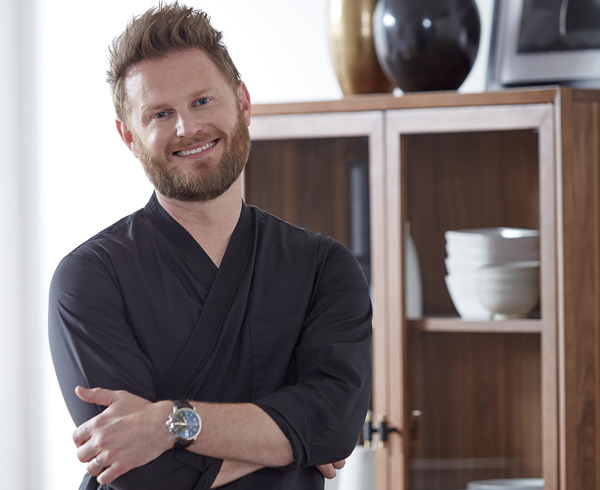
a&e features
What to expect at the 2024 National Cannabis Festival
Wu-Tang Clan to perform; policy discussions also planned
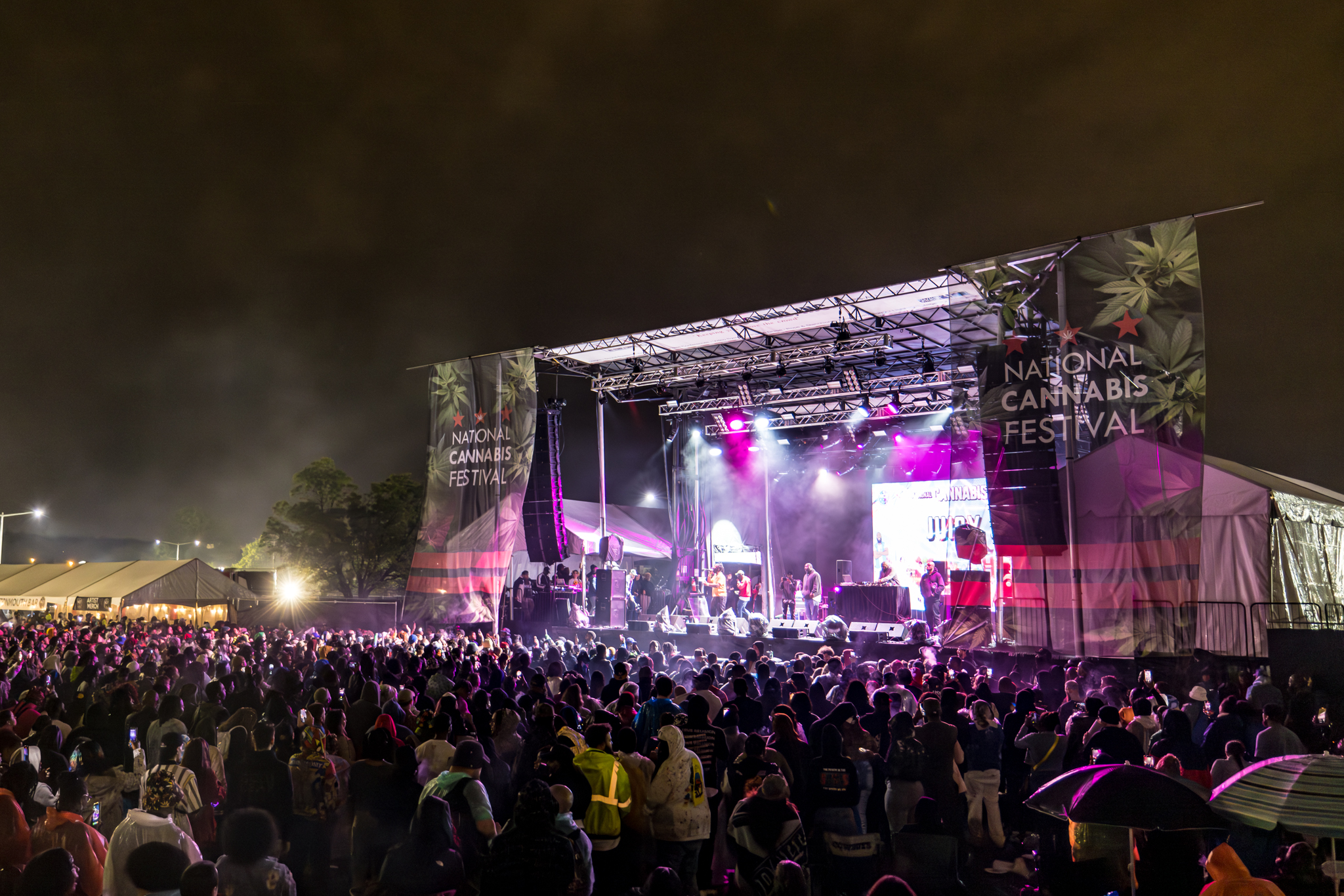
(Editor’s note: Tickets are still available for the National Cannabis Festival, with prices starting at $55 for one-day general admission on Friday through $190 for a two-day pass with early-entry access. The Washington Blade, one of the event’s sponsors, will host a LGBTQIA+ Lounge and moderate a panel discussion on Saturday with the Mayor’s Office of LGBTQ Affairs.)
With two full days of events and programs along with performances by Wu-Tang Clan, Redman, and Thundercat, the 2024 National Cannabis Festival will be bigger than ever this year.
Leading up to the festivities on Friday and Saturday at Washington, D.C.’s RFK Stadium are plenty of can’t-miss experiences planned for 420 Week, including the National Cannabis Policy Summit and an LGBTQ happy hour hosted by the District’s Black-owned queer bar, Thurst Lounge (both happening on Wednesday).
On Tuesday, the Blade caught up with NCF Founder and Executive Producer Caroline Phillips, principal at The High Street PR & Events, for a discussion about the event’s history and the pivotal political moment for cannabis legalization and drug policy reform both locally and nationally. Phillips also shared her thoughts about the role of LGBTQ activists in these movements and the through-line connecting issues of freedom and bodily autonomy.
After D.C. residents voted to approve Initiative 71 in the fall of 2014, she said, adults were permitted to share cannabis and grow the plant at home, while possession was decriminalized with the hope and expectation that fewer people would be incarcerated.
“When that happened, there was also an influx of really high-priced conferences that promised to connect people to big business opportunities so they could make millions in what they were calling the ‘green rush,'” Phillips said.
“At the time, I was working for Human Rights First,” a nonprofit that was, and is, engaged in “a lot of issues to do with world refugees and immigration in the United States” — so, “it was really interesting to me to see the overlap between drug policy reform and some of these other issues that I was working on,” Phillips said.
“And then it rubbed me a little bit the wrong way to hear about the ‘green rush’ before we’d heard about criminal justice reform around cannabis and before we’d heard about people being let out of jail for cannabis offenses.”
“As my interests grew, I realized that there was really a need for this conversation to happen in a larger way that allowed the larger community, the broader community, to learn about not just cannabis legalization, but to understand how it connects to our criminal justice system, to understand how it can really stimulate and benefit our economy, and to understand how it can become a wellness tool for so many people,” Phillips said.
“On top of all of that, as a minority in the cannabis space, it was important to me that this event and my work in the cannabis industry really amplified how we could create space for Black and Brown people to be stakeholders in this economy in a meaningful way.”
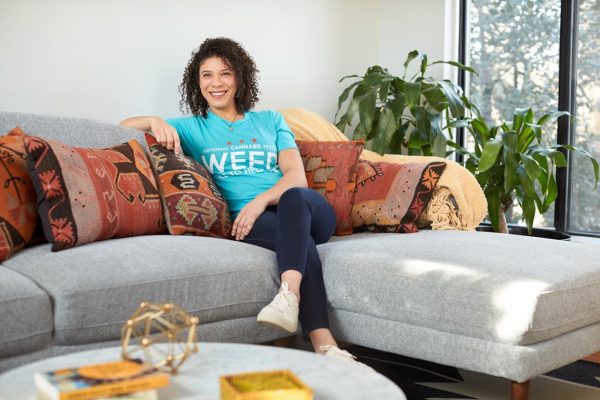
“Since I was already working in event production, I decided to use those skills and apply them to creating a cannabis event,” she said. “And in order to create an event that I thought could really give back to our community with ticket prices low enough for people to actually be able to attend, I thought a large-scale event would be good — and thus was born the cannabis festival.”
D.C. to see more regulated cannabis businesses ‘very soon’
Phillips said she believes decriminalization in D.C. has decreased the number of cannabis-related arrests in the city, but she noted arrests have, nevertheless, continued to disproportionately impact Black and Brown people.
“We’re at a really interesting crossroads for our city and for our cannabis community,” she said. In the eight years since Initiative 71 was passed, “We’ve had our licensed regulated cannabis dispensaries and cultivators who’ve been existing in a very red tape-heavy environment, a very tax heavy environment, and then we have the unregulated cannabis cultivators and cannabis dispensaries in the city” who operate via a “loophole” in the law “that allows the sharing of cannabis between adults who are over the age of 21.”
Many of the purveyors in the latter group, Phillips said, “are looking at trying to get into the legal space; so they’re trying to become regulated businesses in Washington, D.C.”
She noted the city will be “releasing 30 or so licenses in the next couple of weeks, and those stores should be coming online very soon” which will mean “you’ll be seeing a lot more of the regulated stores popping up in neighborhoods and hopefully a lot more opportunity for folks that are interested in leaving the unregulated space to be able to join the regulated marketplace.”
National push for de-scheduling cannabis
Signaling the political momentum for reforming cannabis and criminal justice laws, Wednesday’s Policy Summit will feature U.S. Sens. Raphael Warnock (D-Ga.), Jeff Merkley (D-Ore.), Elizabeth Warren (D-Mass.), and Chuck Schumer (D-N.Y.), the Senate majority leader.
Also representing Capitol Hill at the Summit will be U.S. Congresswoman Eleanor Holmes Norton (D-D.C.) and U.S. Reps. Earl Blumenauer (D-Ore.) and Barbara Lee (D-Calif.) — who will be receiving the Supernova Women Cannabis Champion Lifetime Achievement Award — along with an aide to U.S. Rep. David Joyce (R-Ohio).
Nationally, Phillips said much of the conversation around cannabis concerns de-scheduling. Even though 40 states and D.C. have legalized the drug for recreational and/or medical use, marijuana has been classified as a Schedule I substance since the Controlled Substances Act was passed in 1971, which means it carries the heftiest restrictions on, and penalties for, its possession, sale, distribution, and cultivation.
The U.S. Department of Health and Human Services formally requested the drug be reclassified as a Schedule III substance in August, which inaugurated an ongoing review, and in January a group of 12 Senate Democrats sent a letter to the Biden-Harris administration’s Drug Enforcement Administration urging the agency to de-schedule cannabis altogether.
Along with the Summit, Phillips noted that “a large contingent of advocates will be coming to Washington, D.C. this week to host a vigil at the White House and to be at the festival educating people” about these issues. She said NCF is working with the 420 Unity Coalition to push Congress and the Biden-Harris administration to “move straight to de-scheduling cannabis.”
“This would allow folks who have been locked up for cannabis offenses the chance to be released,” she said. “It would also allow medical patients greater access. It would also allow business owners the chance to exist without the specter of the federal government coming in and telling them what they’re doing is wrong and that they’re criminals.”
Phillips added, however, that de-scheduling cannabis will not “suddenly erase” the “generations and generations of systemic racism” in America’s financial institutions, business marketplace, and criminal justice system, nor the consequences that has wrought on Black and Brown communities.
An example of the work that remains, she said, is making sure “that all people are treated fairly by financial institutions so that they can get the funding for their businesses” to, hopefully, create not just another industry, but “really a better industry” that from the outset is focused on “equity” and “access.”
Policy wonks should be sure to visit the festival, too. “We have a really terrific lineup in our policy pavilion,” Phillips said. “A lot of our heavy hitters from our advocacy committee will be presenting programming.”
“On Saturday there is a really strong federal marijuana reform panel that is being led by Maritza Perez Medina from the Drug Policy Alliance,” she said. “So that’s going to be a terrific discussion” that will also feature “representation from the Veterans Cannabis Coalition.”
“We also have a really interesting talk being led by the Law Enforcement Action Partnership about conservatives, cops, and cannabis,” Phillips added.
Cannabis and the LGBTQ community
“I think what’s so interesting about LGBTQIA+ culture and the cannabis community are the parallels that we’ve seen in the movements towards legalization,” Phillips said.
The fight for LGBTQ rights over the years has often involved centering personal stories and personal experiences, she said. “And that really, I think, began to resonate, the more that we talked about it openly in society; the more it was something that we started to see on television; the more it became a topic in youth development and making sure that we’re raising healthy children.”
Likewise, Phillips said, “we’ve seen cannabis become more of a conversation in mainstream culture. We’ve heard the stories of people who’ve had veterans in their families that have used cannabis instead of pharmaceuticals, the friends or family members who’ve had cancer that have turned to CBD or THC so they could sleep, so they could eat so they could get some level of relief.”
Stories about cannabis have also included accounts of folks who were “arrested when they were young” or “the family member who’s still locked up,” she said, just as stories about LGBTQ people have often involved unjust and unnecessary suffering.
Not only are there similarities in the socio-political struggles, Phillips said, but LGBTQ people have played a central role pushing for cannabis legalization and, in fact, in ushering in the movement by “advocating for HIV patients in California to be able to access cannabis’s medicine.”
As a result of the queer community’s involvement, she said, “the foundation of cannabis legalization is truly patient access and criminal justice reform.”
“LGBTQIA+ advocates and cannabis advocates have managed to rein in support of the majority of Americans for the issues that they find important,” Phillips said, even if, unfortunately, other movements for bodily autonomy like those concerning issues of reproductive justice “don’t see that same support.”
a&e features
Juliet Hawkins’s music defies conventional categorization
‘Keep an open mind, an open heart, and a willingness to evolve’
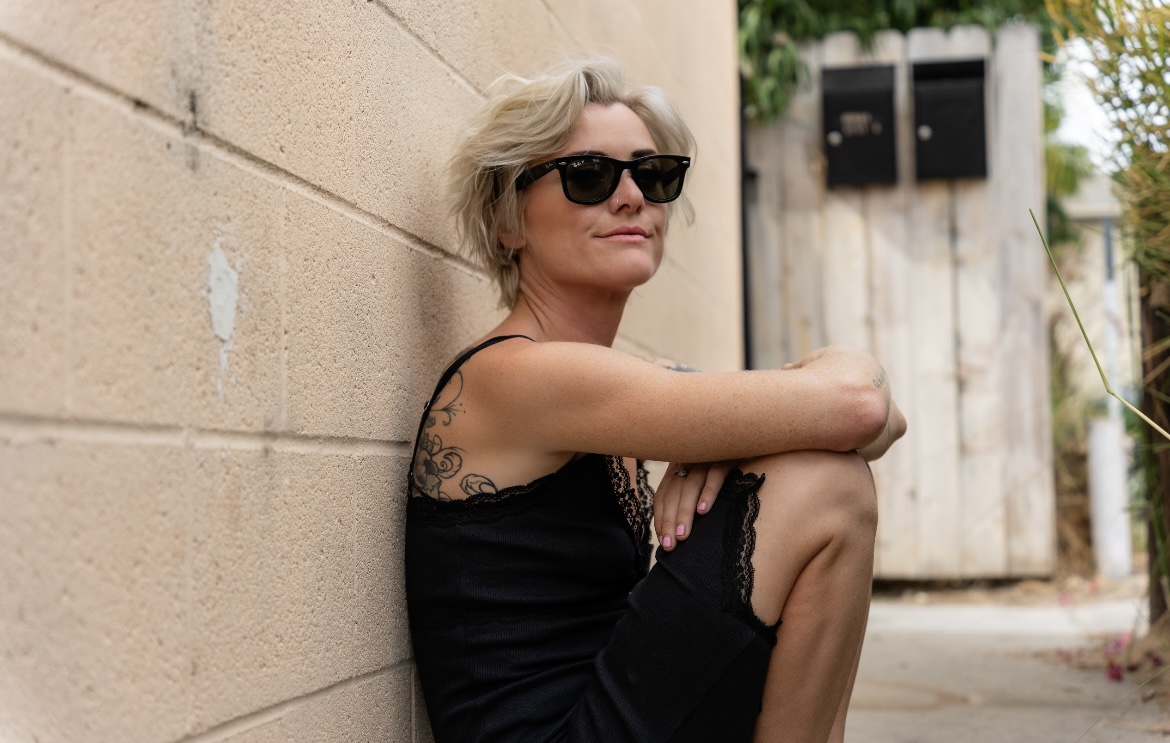
LONG BEACH, Calif. – Emerging from the dynamic music scene of Los Angeles, Juliet Hawkins seamlessly integrates deeply soulful vocals with contemporary production techniques, crafting a distinctive sound that defies conventional categorization.
Drawing inspiration from the emotive depth of Amy Winehouse and weaving together elements of country, blues, and pop, Hawkins’ music can best be described as a fusion–perhaps best termed as soulful electronica. Yet, even this characterization falls short, as Hawkins defines herself as “a blend of a million different inspirations.”
Hawkins’s musical palette mirrors her personae: versatile and eclectic. Any conversation with Hawkins makes this point abundantly clear. She exhibits the archetype of a wild, musical genius while remaining true to her nature-loving, creative spirit. Whether recording in the studio for an album release, performing live in a studio setting, or playing in front of a live audience, Hawkins delivers her music with natural grace.
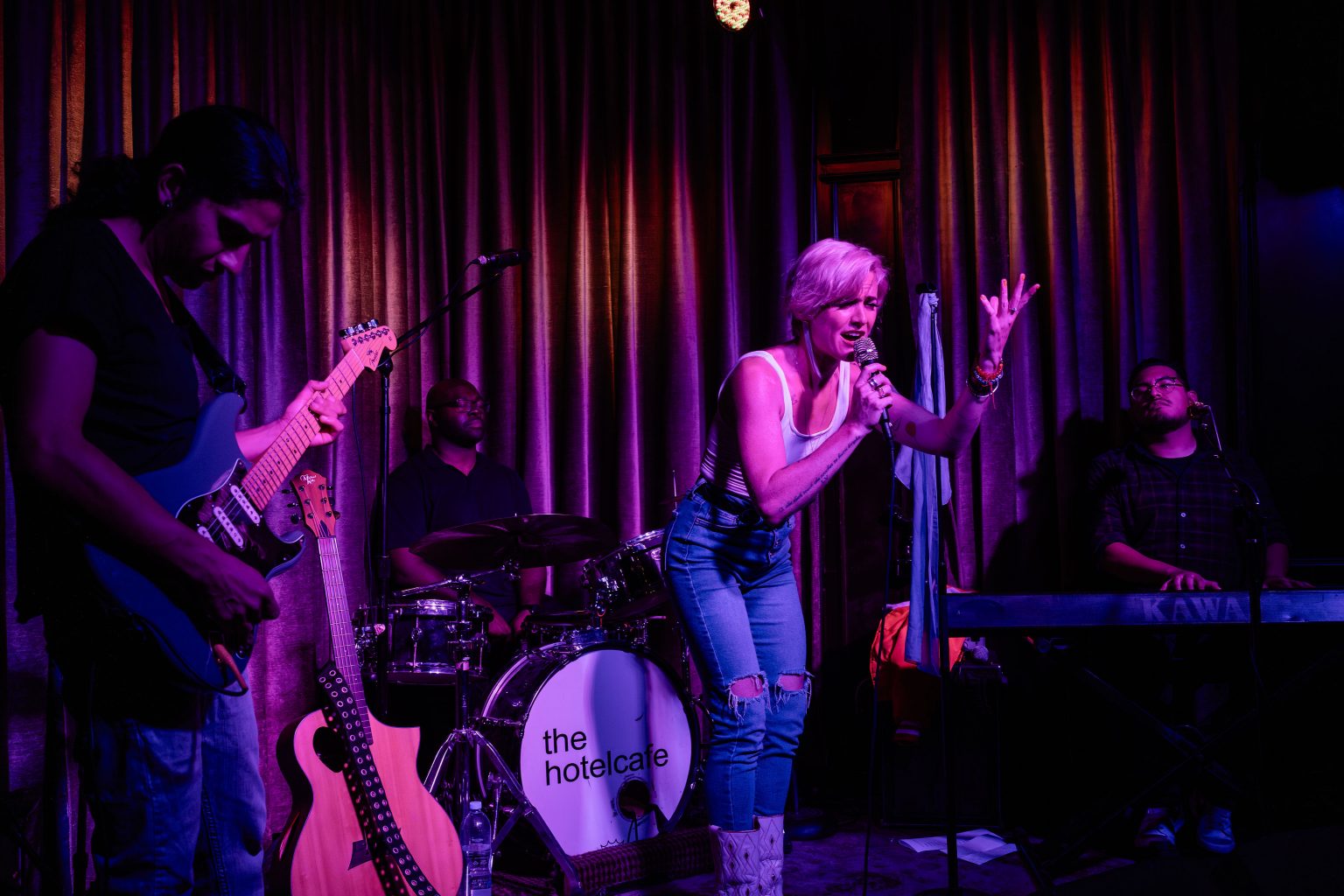
However, Hawkins’s musical journey is far from effortless. Amid personal challenges and adversity, she weaves her personal odyssey of pain and pleasure, transforming these experiences into empowering anthems.
In a candid interview with the Blade, Hawkins spoke with profound openness and vulnerability about her past struggles with opiate and heroin addiction: “That was 10 years ago that I struggled with opiates,” she shared. Yet, instead of letting her previous addiction define her, Hawkins expressed to the Blade that she harbors no shame about her past. “My newer music is much more about empowerment than recovery,” she explained, emphasizing that “writing was the best way to process trauma.”
Despite her struggles with addiction, Hawkins managed to recover. However, she emphasizes that this recovery is deeply intertwined with her spiritual connection to nature. An illustrative instance of Hawkins’ engagement with nature occurred during the COVID pandemic.
Following an impulse that many of us have entertained, she bought a van and chose to live amidst the trees. It was during this period that Hawkins composed the music for her second EP, titled “Lead with Love.”
In many ways, Hawkins deep spiritual connection to nature has been profoundly shaped by her extensive travels. Born in San Diego, spending her formative years in Massachusetts, and later moving to Tennessee before returning to Southern California, she has broadened her interests and exposed herself to the diverse musical landscapes across America.
“Music is the only thing I have left,” Hawkins confides to the Blade, highlighting the integral role that music has in her life. This intimate relationship with music is evident in her sultry and dynamic compositions. Rather than imitating or copying other artists, Hawkins effortlessly integrates sounds from some of her favorite musical influences to create something new. Some of these influences include LP, Lucinda Williams, Lana Del Rey, and, of course, Amy Winehouse, among others.
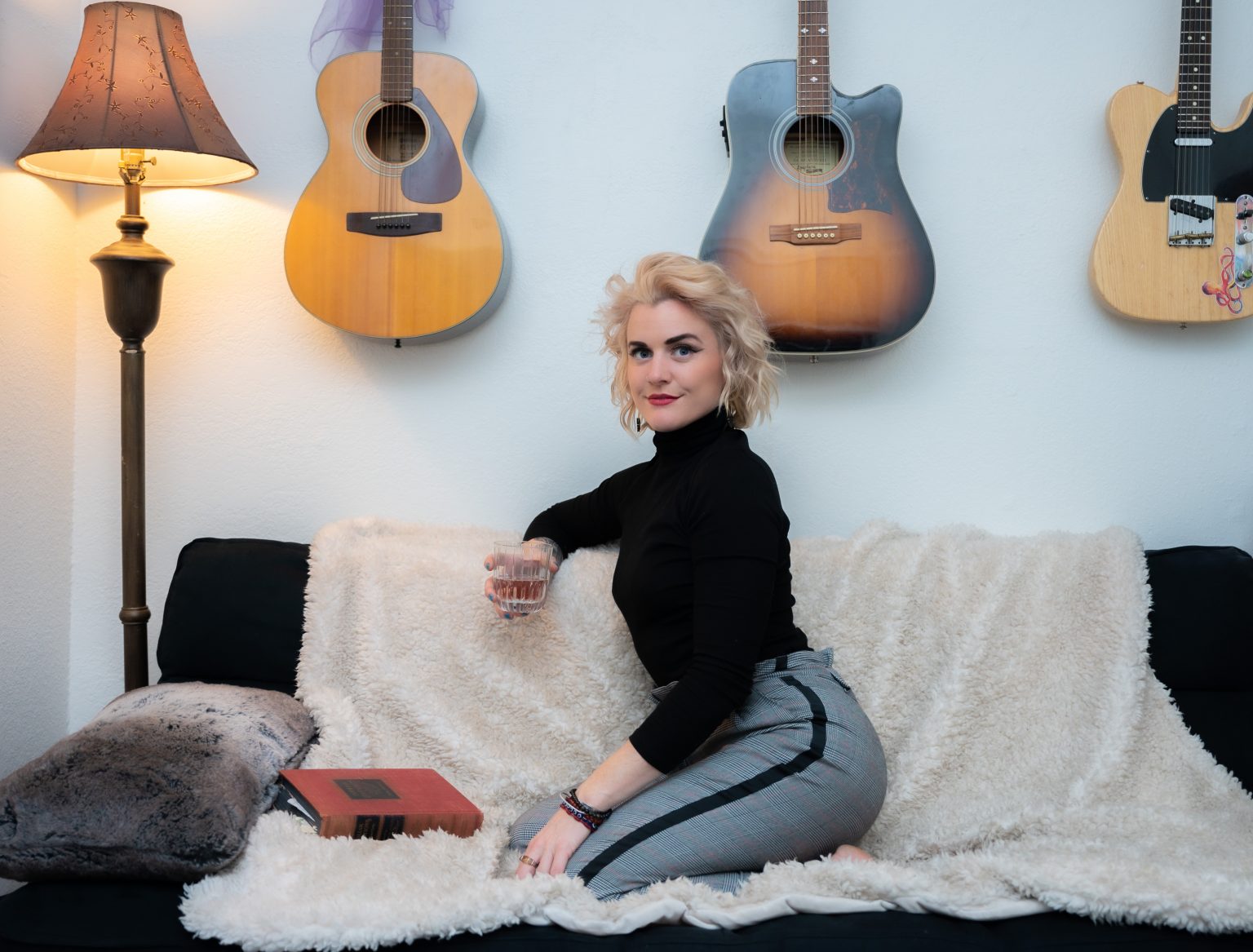
Hawkins has always been passionate about music—-she began with piano at a young age, progressed to guitar, and then to bass, eagerly exploring any instrument she could get her hands on. However, instead of following a traditional path of formalized lessons and structured music theory, Hawkins told the Blade that she “has a hard time following directions and being told what to do.”
This independent approach has led her to experiment with various genres and even join unexpected groups, such as a tribute band for Eric Clapton and Cream. While she acknowledges that her eclectic musical interests might be attributed to ADHD, she holds a different belief: “Creative minds like to move around.”
When discussing her latest musical release — “Stay True (the live album)” which was recorded in a live studio setting — Hawkins describes the experience as a form of improvisation with both herself and the band:
“[The experience] was this divine honey that was flowing through all of us.” She explains that this live album was uncertain in the music’s direction. “For a couple of songs,” Hawkins recalls, “we intuitively closed them out.” By embracing creative spontaneity and refusing to be constrained by fear of mistakes, the live album authentically captures raw sound, complete with background chatter, extended outros, and an extremely somber cover of Ozzy Osbourne’s “Crazy Train” coupled with a slow piano and accompanied strings.
While “Stay True” was a rewarding experience for Hawkins, her favorite live performance took place in an unexpected location—an unattended piano in the middle of an airport. As she began playing Beethoven’s “Moonlight Sonata”, Hawkins shared with the Blade a universal connection we all share with music: “This little girl was dancing as I was playing.”
After the performance, tears welled in Hawkins’ eyes as she was touched by the young girl’s appreciation of her musicianship. Hawkins tells the Blade, “It’s not about playing to an audience—it’s about finding your people.”
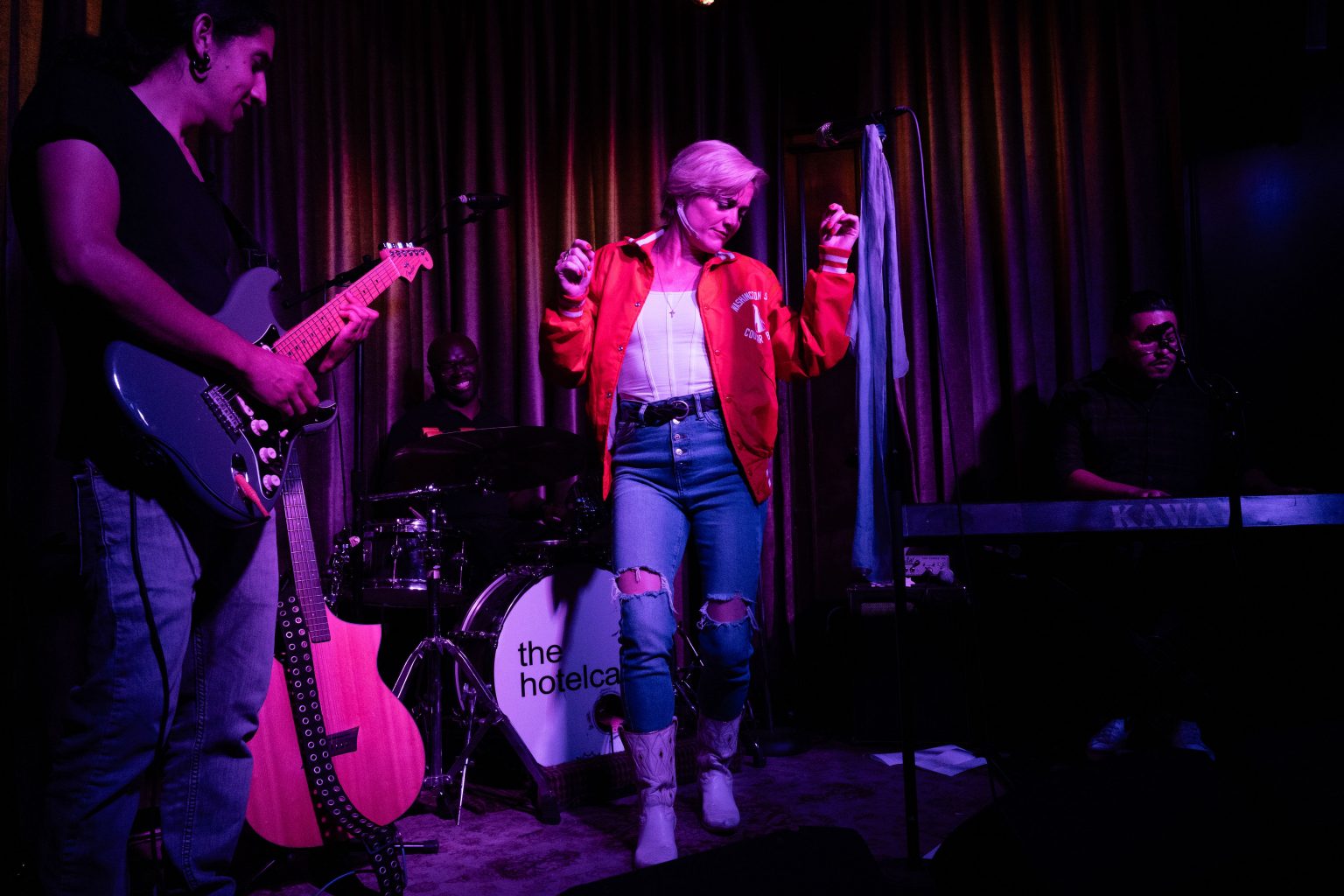
What sets Hawkins apart as an artist is her ability to connect with her audience in diverse settings. She highlights EDC, an electronic dance music festival, as a place where she unabashedly lets her “freak flag” fly and a place to connect with her people. Her affinity for electronic music not only fuels her original pop music creations, but also inspires her to reinterpret songs with an electronic twist. A prime example of this is with her electronic-style cover of Tal Bachman’s 90’s hit, “She’s So High.”
As an openly queer woman in the music industry, Hawkins is on a mission to safeguard artistic integrity. In songs like “My Father’s Men,” she bares her vulnerability and highlights the industry’s misogyny, which often marginalizes gender minorities in their pursuit of artistic expression.
She confides to the Blade, “The industry can be so sexist, misogynist, and oppressive,” and points out that “there are predators in the industry.” Yet, rather than succumbing to apathy, Hawkins is committed to advocating for gender minorities within the music industry.
“Luckily, people are rising up against misogyny, but it’s still there. ‘My Father’s Men’ is a message: It’s time for more people who aren’t just white straight men to have a say.”
Hawkins is also an activist for other causes, with a fervent belief in the preservation of bodily autonomy. Her self-directed music video “I’ll play Daddy,” showcases the joy of embracing one’s body with Hawkins being sensually touched by a plethora of hands. While the song, according to Hawkins, “fell upon deaf ears in the south,” it hasn’t stopped Hawkins from continuing to fight for the causes she believes in. In her interview, Hawkins encapsulated her political stance by quoting an artist she admires:
“To quote Pink, ‘I don’t care about your politics, I care about your kids.’”
When Hawkins isn’t writing music or being a champion for various causes, you might catch her doing the following: camping, rollerblading, painting, teaching music lessons, relaxing with Bernie (her beloved dog), stripping down for artsy photoshoots, or embarking on a quest to find the world’s best hollandaise sauce.
But at the end of the day, Hawkins sums up her main purpose: “To come together with like-minded people and create.”
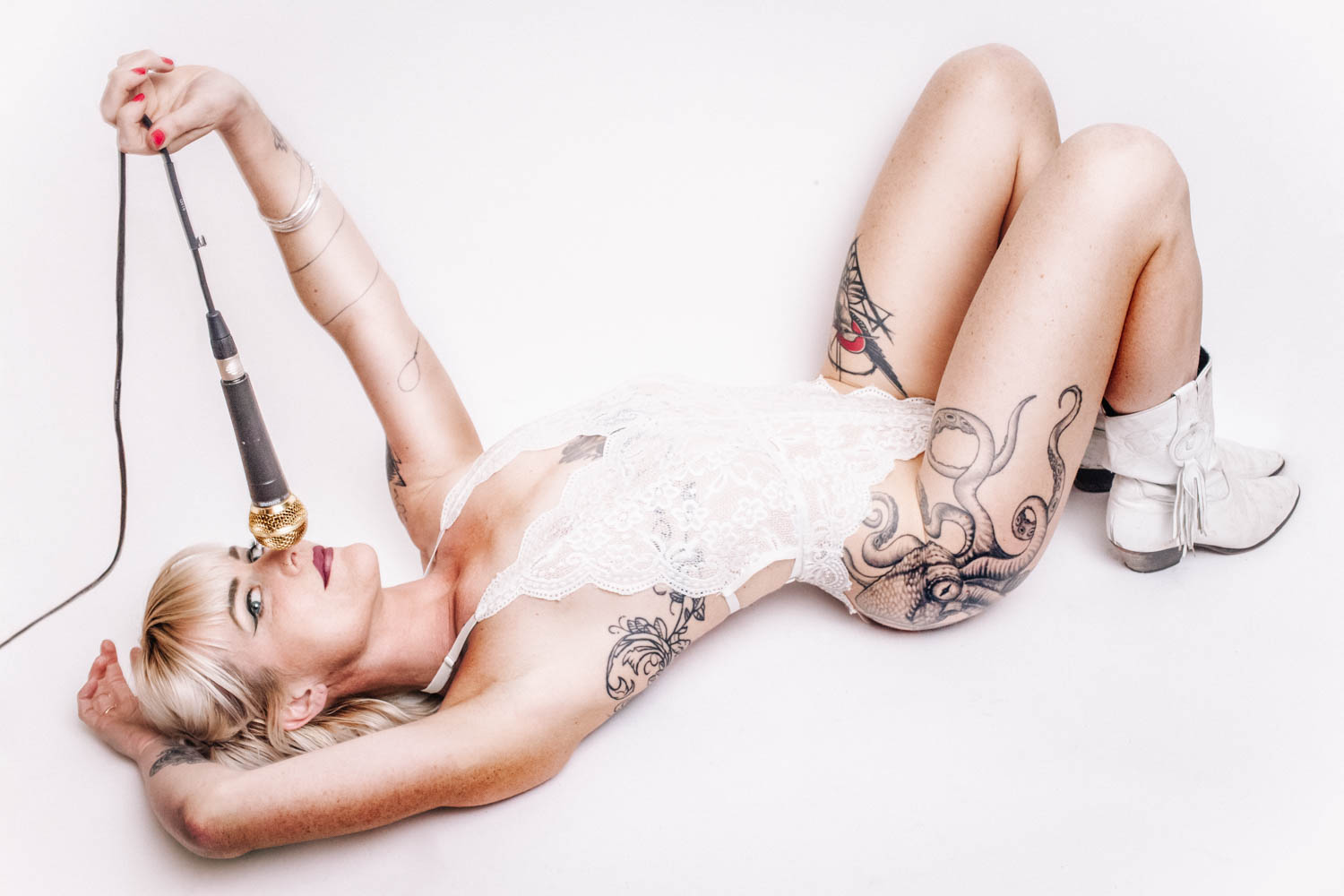
Part of this ever-evolving, coming-of-age-like journey includes an important element: plant-based medicine. Hawkins tells the Blade that she acknowledges her previous experience with addiction and finds certain plants to be useful in her recovery:
“The recovery thing is tricky,” Hawkins explains, “I don’t use opiates—-no powders and no pills—but I am a fan of weed, and I think psilocybin can be helpful when used at the right time.” She emphasizes the role of psychedelics in guiding her towards her purpose. “Thanks for psychedelics, I have a reignited sense of purpose … Music came naturally to me as an outlet to heal.”
While she views the occasional dabbling of psychedelics as a spiritual practice, Hawkins also embraces other rituals, particularly those she performs before and during live shows. “I always carry two rocks with me: a labradorite and a tiger’s eye marble,” she explains.
a&e features
Lavender Mass and the art of serious parody in protest
Part 3 of our series on the history of LGBTQ religion in D.C.
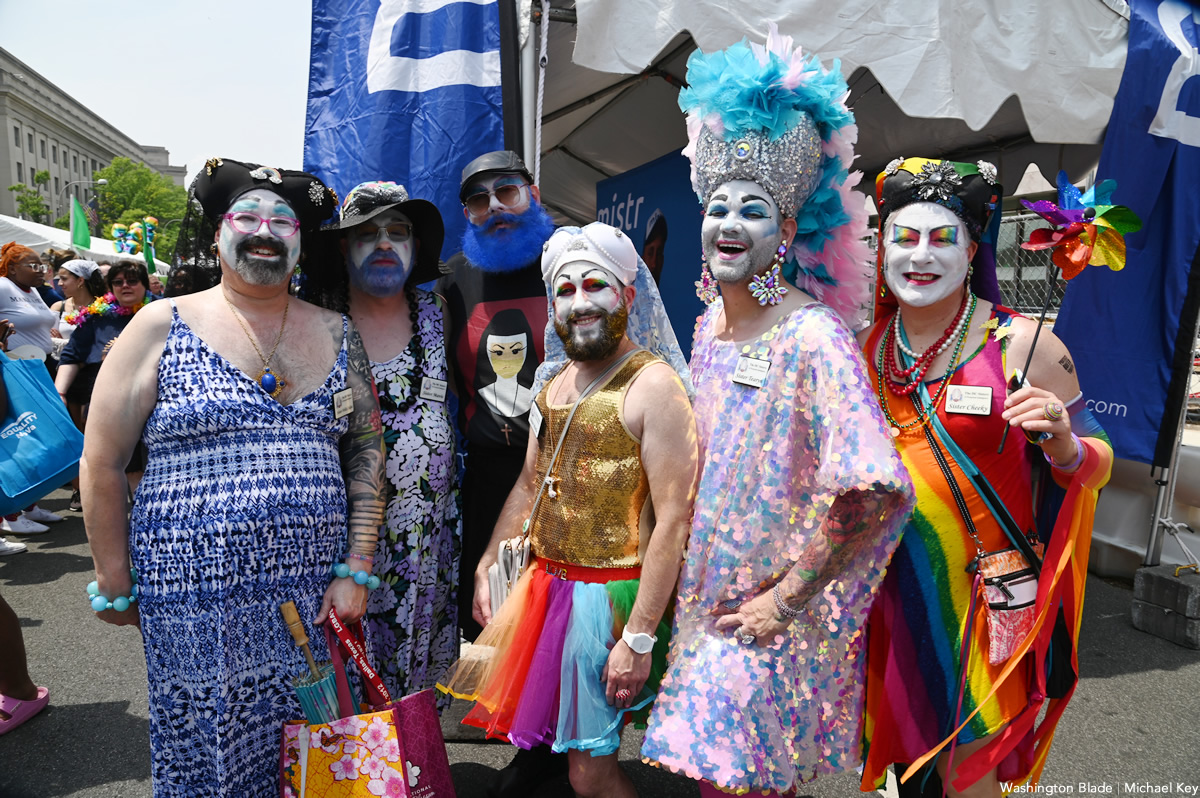
(Editor’s note: Although there has been considerable scholarship focused on LGBTQ community and advocacy in D.C., there is a deficit of scholarship focused on LGBTQ religion in the area. Religion plays an important role in LGBTQ advocacy movements, through queer-affirming ministers and communities, along with queer-phobic churches in the city. This is the final installment of a three-part series exploring the history of religion and LGBTQ advocacy in Washington, D.C. Visit our website for the previous installments.)
Six sisters gathered not so quietly in Marion Park, Washington, D.C. on Saturday, October 8, 2022. As the first sounds of the Women’s March rang out two blocks away at 11 am, the Sisters passed out candles to say Mass on the grass. It was their fifth annual Lavender Mass, but this year’s event in particular told an interesting story of religious reclamation, reimagining a meaningful ritual from an institution that seeks to devalue and oppress queer people.
The D.C. Sisters are a chapter of the Sisters of Perpetual Indulgence, an organization of “drag nuns” ministering to LGBTQ+ and other marginalized communities. What first began as satire on Easter Sunday 1979 when queer men borrowed and wore habits from a production of The Sound of Music became a national organization; the D.C. chapter came about relatively late, receiving approval from the United Nuns Privy Council in April 2016. The D.C. Sisters raise money and contribute to organizations focused on underserved communities in their area, such as Moveable Feast and Trans Lifeline, much like Anglican and Catholic women religious orders.
As Sister Ray Dee O’Active explained, “we tend to say we raise funds, fun, and hell. I love all three. Thousands of dollars for local LGBTQ groups. Pure joy at Pride parades when we greet the next generation of activists. And blatant response to homophobia and transphobia by protest after protest.” The Lavender Mass held on October 8th embodied their response to transphobia both inside and outside pro-choice groups, specifically how the overturn of Roe v. Wade in June 2022 intimately affects members of the LGBTQ+ community.
As a little history about the Mass, Sister Mary Full O’Rage, shown wearing a short red dress and crimson coronet and veil in the photo above developed the Lavender Mass as a “counterpart” or “counter narrative” to the Red Mass, a Catholic Mass held the first Sunday of October in honor Catholics in positions of civil authority, like the Supreme Court Justices. The plan was to celebrate this year’s Lavender Mas on October 1st at the Nuns of the Battlefield Memorial, located right across the street from the Cathedral of St. Matthew the Apostle, where many Supreme Court Justices attend the Red Mass every year.
As Sister Mary explained, this year “it was intended to be a direct protest of the actions of the Supreme Court, in significant measure their overturning of reproductive rights.”
Unfortunately, the October 1st event was canceled due to heavy rain and postponed to October 8th at the recommendation of Sister Ruth Lisque-Hunt and Sister Joy! Totheworld. The focus of the Women’s March this year aligned with the focus of the Lavender Mass—reproductive rights—and this cause, Sister Mary explained, “drove us to plan our Lavender Mass as a true counter-ritual and protest of the Supreme Court of who we expected to attend the Red Mass,” and who were protested in large at the Women’s March.
The “Lavender Mass was something that we could adopt for ourselves,” Sister Mary spoke about past events. The first two Masses took place at the Lutheran Church of the Reformation, right around the corner from the Supreme Court. The second Mass, as Sister Mary explained, celebrated Justice Ruth Bader Ginsburg; “we canonized her.” Canonization of saints in the Catholic Church also takes place during a Mass, a Papal Mass in particular.
During the COVID-19 pandemic, the Sisters moved the Mass outside for safety, and the third and fourth Masses were celebrated at the Nuns of the Battlefield Memorial. “It celebrates nuns, and we are nuns, psycho-clown nuns,” Sister Mary chuckled, “but we are nuns.” After the Mass, the Sisters would gather at a LGBTQ+ safe space or protest at the Catholic Church or Supreme Court. Although they often serve as “sister security” at local events, working to keep queer community members safe according to Sister Amore Fagellare, the Lavender Mass is not widely publicly advertised, out of concern for their own.
On October 8th, nine people gathered on the grass in a circle—six sisters, myself, and two people who were close with professed members—as Sister Mary called us to assemble before leading us all in chanting the chorus to Sister Sledge’s 1979 classic song “We Are Family.”
Next, novice Sister Sybil Liberties set a sacred space, whereby Sister Ruth and Sister Tearyn Upinjustice walked in a circle behind us, unspooling pink and blue ribbons to tie us together as a group. As Sister Sybil explained, “we surround this sacred space in protection and sanctify it with color,” pink for the choice to become a parent and blue for the freedom to choose not to be a parent but also as Sybil elaboration, in recognition of “the broad gender spectrum of people with the ability to become pregnant.” This intentional act was sought to fight transphobia within the fight for reproductive rights.
After singing Lesley Gore’s 1963 song “You Don’t Own Me,” six speakers began the ritual for reproductive rights. Holding out our wax plastic candles, Sister Sybil explained that each speaker would describe a story or reality connected to reproductive rights, and “as I light a series of candles for the different paths we have taken, if you recognize yourself in one of these prayers, I invite you to put your hand over your heart, wherever you are, and know that you are not alone – there is someone else in this gathered community holding their hand over their heart too.”
The Sisters went around the circle lighting a candle for those whose stories include the choice to end a pregnancy; those whose include the unwanted loss of a pregnancy or struggles with fertility; those whose include the choice to give birth, raise or adopt a child; those whose include the choice not to conceive a child, to undergo forced choice, or with no choice at all; those who have encountered violence where there “should have been tenderness and care;” and those whose reproductive stories are still being written today.
After each reading, the group spoke together, “may the beginnings and endings in our stories be held in unconditional love and acceptance,” recalling the Prayer of the Faithful or General Intercessions at Catholic Masswhere congregations respond “Lord, hear our prayer” to each petition. Sister Sybil closed out the ritual as Sister Mary cut the blue and pink ribbons between each person, creating small segments they could take away with them and tie to their garments before walking to the Women’s March. The Sisters gathered their signs, drums, and horns before walking to Folger Park together into the crowd of protestors.
At first glance, the Lavender Mass may appear like religious appropriation, just as the Sisters themselves sometimes look to outsiders. They model themselves after Angelican and Catholic women religious, in dress—they actively refer to their clothing as “habits,” their organization—members must also go through aspirant, postulant, and novice stages to be fully professed and they maintain a hierarchical authority, and in action. Like white and black habits, the Sisters all wear white faces to create a unified image and colorful coronets, varying veil color based on professed stage. Sister Allie Lewya explained at their September 2022 meeting, “something about the veils gives us a lot of authority that is undue,” but as the Sisters reinforced at the Women’s March, they are not cosplayers nor customers, rather committed clergy.
As such, the Sisters see their existence within the liminal spaces between satire, appropriation, and reimagination, instead reclaiming the basis of religious rituals to counter the power holders of this tradition, namely, to counter the Catholic Church and how it celebrates those in positions of authority who restrict reproductive rights. Similarly, the Lavender Mass is modeled after a Catholic or Anglican Mass. It has an intention, namely reproductive rights, a call to assemble, setting of a sacred space, song, chant, and prayer requests. It even uses religious terminology; each section of the Mass is ended with a “may it be/Amen/Awen/Ashay/aho.”
While this ritual—the Lavender Mass—appropriates a religious ritual of the Catholic Church and Anglican Church, this religious appropriation is necessitated by exclusion and queerphobia. As David Ford explains in Queer Psychology, many queer individuals retain a strong connection to their faith communities even though they have experienced trauma from these same communities. Jodi O’Brien builds on this, characterizing Christian religious institutions as spaces of personal meaning making and oppression. This essay further argues that the fact this ritual is adopted and reimagined by a community that the dominant ritual holder—the Catholic Church—oppressed and marginalized, means that it is not religious appropriation at all.
Religious appropriation, as highlighted in Liz Bucar’s recent book, Stealing My Religion (2022), is the acquisition or use of religious traditions, rituals, or objects without a full understanding of the community for which they hold meaning. The Sisters, however, fully understand the implications of calling themselves sisters and the connotations of performing a ritual they call a “Mass” as women religious, a group that do not have this authority in the Catholic Church. It is the reclamation of a tradition that the Sisters of Perpetual Indulgence understand because some were or are part of the Catholic Church.
Some sisters still seek out spiritual meaning, but all also recognize that the Catholic Church itself is an institution that hinders their sisters’ access and actively spreads homophobia and transphobia to this day. As such, through the Lavender Mass, the sisters have reclaimed the Mass as a tool of rebellion in support of queer identity.
Just as the Sisters recognize the meaning and power of the ritual of a Mass, along with the connotations of being a sister, the Lavender Mass fulfilled its purpose as a ritual of intention just as the Sisters fulfill public servants. “As a sister,” Sister Ruth dissected, “as someone who identifies as a drag nun, it perplexes people, but when you get the nitty gritty, we serve a similar purpose, to heal a community, to provide support to a community, to love a community that has not been loved historically in the ways that it should be loved.
The Sisters’ intentionality in recognizing and upholding the role of a woman religious in their work has been well documented as a serious parody for the intention of queer activism by Melissa Wilcox. The Lavender Mass is a form of serious parody, as Wilcox posits in the book: Queer Nuns: Religion, Activism, and Serious Parody(2018). The Mass both challenges the queerphobia of the Catholic Church while also reinforcing the legitimacy of this ritual as a Mass. The Sisters argue that although they would traditionally be excluded from religious leadership in the Catholic Church, they can perform a Mass. In doing so, they challenge the role that women religious play in the Catholic Church as a whole and the power dynamics that exclude queer communities from living authentically within the Church.
By reclaiming a tradition from a religious institution that actively excludes and traumatizes the LGBTQ+ community, the Lavender Mass is a form of religious reclamation in which an oppressed community cultivates queer religious meaning, reclaims a tradition from which they are excluded, and uses it to fuel queer activism (the fight for reproductive rights). This essay argues that the Lavender Mass goes one step further than serious parody. While the Sisters employ serious parody in their religious and activist roles, the Lavender Mass is the active reclamation of a religious tradition for both spiritual and activist ends.
Using the celebration of the Mass as it was intended, just within a different lens for a different purpose, this essay argues, is religious reclamation. As a collection of Austrian and Aotearoan scholars explored most recently in a chapter on acculturation and decolonization, reclamation is associated with the reassertion and ownership of tangibles: of rituals, traditions, objects, and land. The meaning of the Lavender Mass comes not only from the Sisters’ understanding of women religious as a social and religious role but rather from the reclamation of a physical ritual—a Mass—that has specific religious or spiritual meaning for the Sisters.
When asked why it was important to call this ritual a “Mass,” Sister Mary explained: “I think we wanted to have something that denoted a ritual, that was for those who know, that the name signifies that it was a counter-protest. And you know, many of the sisters grew up with faith, not all of them Catholics but some, so I think ‘Mass’ was a name that resonated for many of us.”
As Sister Ray said, “my faith as a queer person tends to ostracize me but the Sisters bring the imagery and language of faith right into the middle of the LGBTQ world.” This Lavender Mass, although only attended and experienced by a few of the Women’s March protests, lived up to its goal as “a form of protest that is hopefully very loud,” as Sister Millie Taint advertised in the Sisters’ September 2022 chapter meeting. It brought religious imagery and language of faith to a march for reproductive rights, using a recognized model of ritual to empower protestors.
The Lavender Mass this year, as always, was an act of rebellion, but by situating itself before the Women’s March and focusing its intention for reproductive rights, the Sisters’ reclaimed a religious ritual from a system of authority which actively oppressed LGBTQ+ peoples and those with the ability to become pregnant, namely the Catholic Church, and for harnessing it for personal, political, and spiritual power. In essence, it modelled a system of religious reclamation, by which a marginalized community takes up a religious ritual to make its own meaning and oppose the religious institution that seeks to exclude the community from ritual participation.
Emma Cieslik will be presenting on LGBTQ+ Religion in the Capital at the DC History Conference on Friday, April 6th. She is working with a DC History Fellow to establish a roundtable committed to recording and preserving this vital history. If you have any information about these histories, please reach out to Emma Cieslik at [email protected] or the Rainbow History Project at [email protected].
-
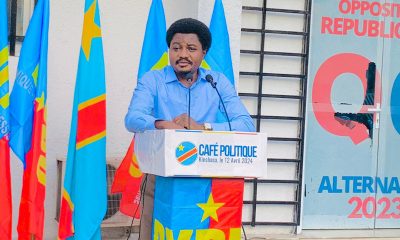
 Africa5 days ago
Africa5 days agoCongolese lawmaker introduces anti-homosexuality bill
-
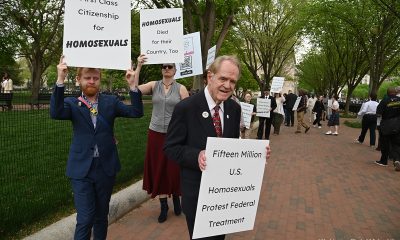
 District of Columbia2 days ago
District of Columbia2 days agoReenactment of first gay rights picket at White House draws interest of tourists
-
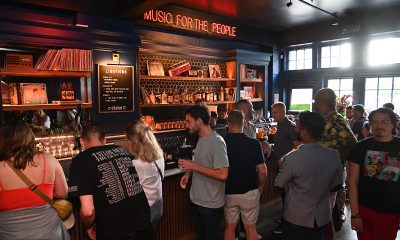
 District of Columbia1 day ago
District of Columbia1 day agoNew D.C. LGBTQ+ bar Crush set to open April 19
-
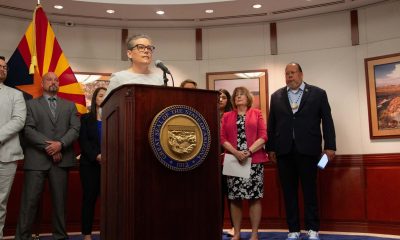
 Arizona2 days ago
Arizona2 days agoAriz. governor vetoes anti-transgender, Ten Commandments bill

